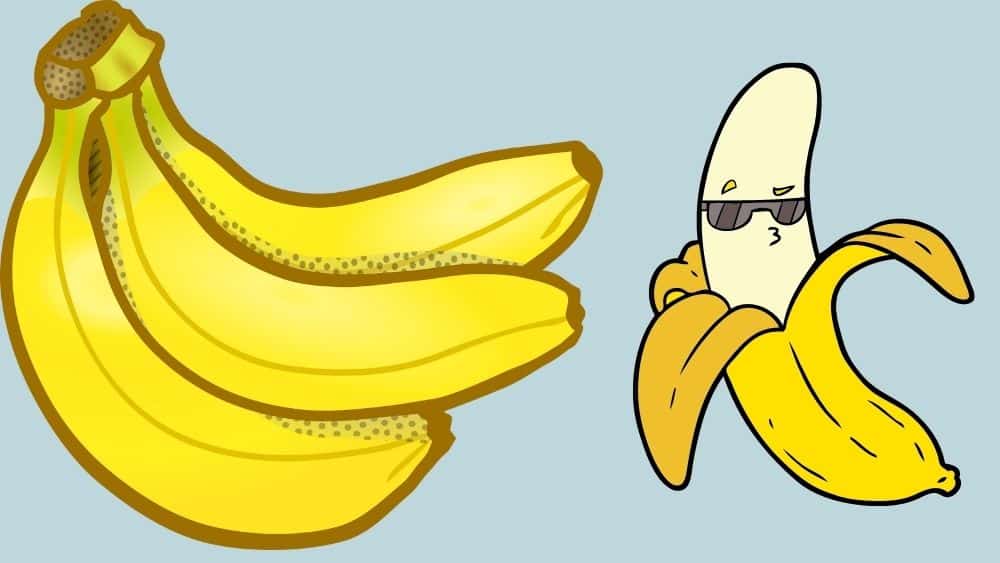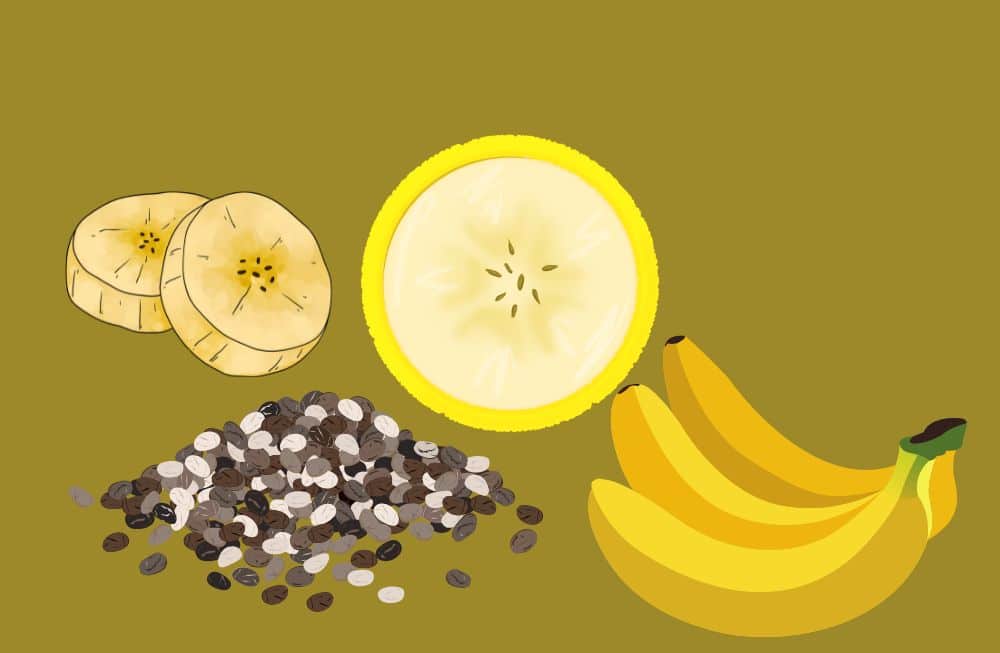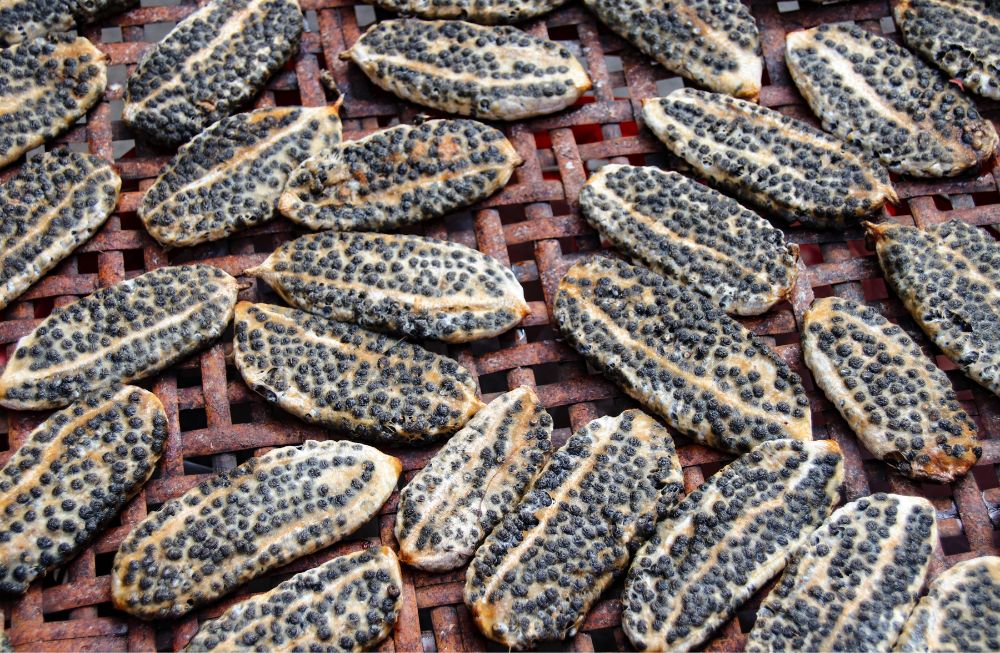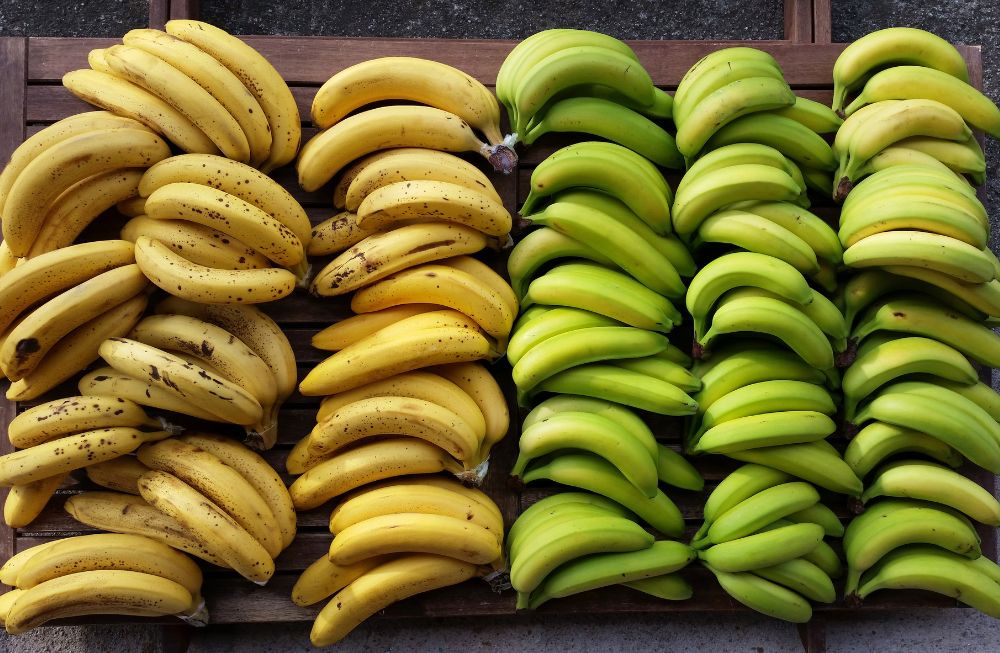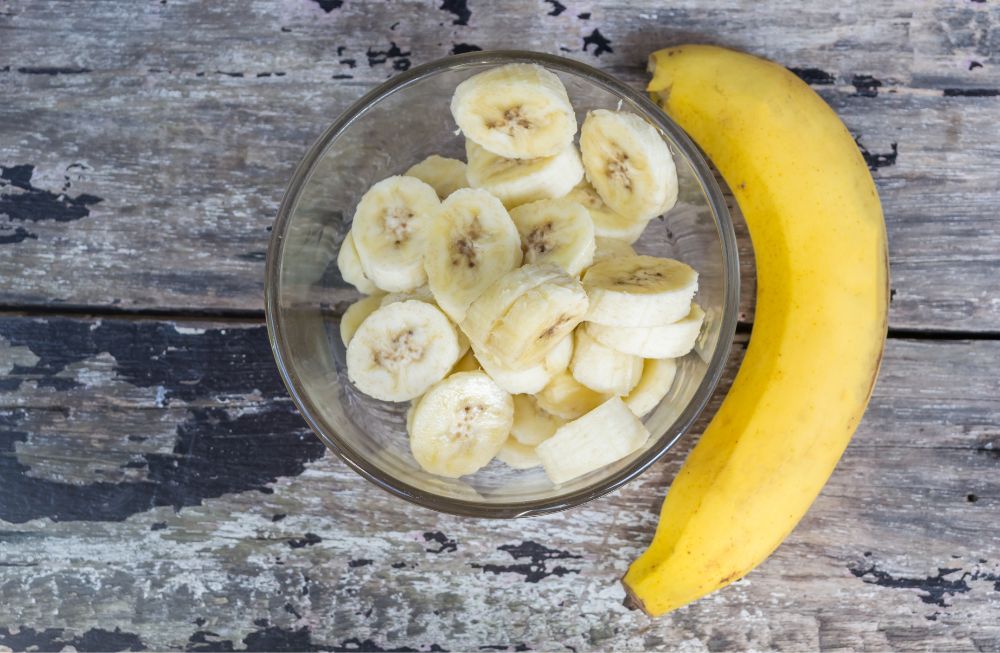Pied banana for python is one of the most sought-after morphs in the row of other Ball python morphs. It is well-known and quite adorable to snake lovers because of its quite stunning look, and highlighting patches on the overall un-pigmented white areas. In most cases, the entire segment is white while a few have the typical colors of a banana.
As it is a recessive mutation thus the piebald gene is bred only when both parents carry the same gene. Anyway, that’s not the end you need to know about this unique morph. Dig deeper till the end of your guide to learn many more unknown facts, information, pricing, and caring details about the Pied banana ball python.
| Common Name | Banana Pied Ball Python |
| Adult size | 2-5 feet |
| Appearance | Total whiteness with random patches in unaffected color |
| Lifespan | 20-30 years |
| Diets | Rodents |
| Required experience level | Beginner to expert |
| Enclosure size | 30-60 gallons |
Incredible Banana Pied Ball Python Facts
- Banana pied ball pythons are docile natures and tend to be easy to care for. Thus it is a good recommendation if you are a beginner as a pet snake parent.
- This is the most beautiful morph that consists of un-pigmented areas on its body. The un-pigmented areas are in white color.
- The most amazing fact is that the amount of un-pigmented scales is not inherited from parents.
- In an appropriate captivity, the pied ball python can live decent years. It is even up to 30-40 years in length as well.
- When this morph feels shy or becomes a bit aggressive, they like to curl up into a cute little ball. So imagine how cute a pet snake is!
- They are in the range of solitary animals for why you need to keep each one alone if you have more than one pied ball python.
- They move very slowly but deliberately.
- This snake needs a perfect rhythm in its lifestyle starting from feeding, shedding, and in all cases.
- Female python lays eggs about 5-10 at a time and then circle around their eggs in order to warm and incubate their own eggs.
- As a pet parent, you need to ensure perfect humidity and temperature levels in your python’s tank to keep it healthy.
- You need to ensure the perfect enclosure for your Banana pied ball python as in the listing below:
| Tank Type | 60-gallon glass or plastic tank |
| Lighting | 12 hours of light and dark |
| Heating | 75W infrared heat lamp |
| substrate | Coconut Husk, Artificial Carpet, wood shavings. |
What Is A Banana Pied Ball Python?
The Banana pied ball python is one of the most popular and colorful morph variations of the Banana ball python. There are up to 20 morph varieties available for Banana ball python.
The pied ball python is an incredibly unique-looking version of all morphs. Due to having a stellar temperament and easy care, this ball python variation comes in the range of fan-favorite pet snakes.
The pied ball python is almost similar in pattern compared to other normal Ball Pythons. But the changes come with the colors. You will find the most vibrant color pattern in this pied ball python morph.
Basically the name “Pied” reflects the overall color contrast of this pet snake. The term Pied means lack of pigmentation. Hence, if you see it, you can easily define the vibrant big white splotches all over its body.
History & Breeding
If you are wondering about how Piebald python comes, truly saying there is no exact science to it to describe the fact. Basically piebald is the range of recessive genetic traits. The animal bearing this Piebald genetics has a pattern of unpigmented spots just on a pigmented background. In Middle English, the pied indicates an alternating color contrasting making up the quarters on other colors.
Anyway, due to genetic rare, it is hard to breed this ball python morph until you are mating two piebald pythons together. When you are doing this, you will get an ample amount of pied neonates. For more clear, you can see the image below:
Here you can see that both parents have two genes each at the Pied locus. Thus after breeding, this creates the pied genes [2 possibilities from the mother and two possibilities from the father]
On the other hand, if you are breeding a pied parent to a het Pied, then you will get 50% pied on the child and 50% will be het for pied. See the clear image below:
In this sense, you are getting most of the piebald morphs in entirely white patterns and many have smaller white splotches overall.
Anyway, now let’s have a short glimpse of the history of the Pied ball python. It was first introduced in the mid 90’s. Basically in the early 1960, an adult male pied ball python was caught and killed in Ghana.
In 1980, many more Pied ball python morphs were imported from Ghana into the US. As time passed, more and more ball pythons in
Piebald morphs started being imported to the US and Europe. They started to reproduce then in proper captivity and this morph became one of the most popular pets in snake grade.
Pied Banana Ball Python Appearance
Color Variations & Markings
The quickest fact to recognize the Pied Ball python is its coloration. Their overall body appearance is enough to stand apart from the pied ball python from other morphs. They are easily identified with an entirely white body or by a few smaller white splotches to the entire body.
These splotches are quite irregular but have enough vibrant white paint on them. You will find the patches nicely organized around the sides of their body.
At their mature point, they almost look like a ripe banana but the yellow patches are like an interruption in the banana white. But this results in one of the most beautiful snakes in the range of the ball python morphs.
Banana Pied Ball Python Size
You will find the pied banana ball python in different sizes starting from the smaller ones to the large size. Basically, the smaller ones are as popular as a pet snake. After growing up, the male is found two to three feet in length whereas the female is five feet in length on average.
When it is weighed, the mature pied python is about four to five pounds in weight. But the overall measurement will vary depending on the gender and size of your snake.
Behavior & Temperament
Almost all the morphs of the Banana pied ball python are docile and quite harmless. They can easily cooperate with any of the reptile owners no matter if you are a professional in this field or just a beginner as a pet snake parent. They are basically mainly known for having a chilled personality and rarely bit their owner. This will only happen when you are continuously provoking him without any reason.
Their teeth are sharp but don’t worry they won’t cut particularly deep meaning it won’t be a serious harm to humans. They are not venomous and still, it cuts, just treat it as a normal cut in your body.
It uses a forked tongue as a sign of communication and to figure out its bearings. But at the moment of anger or any stress, you will find it curled into a ball to protect itself. At that point, they may start hissing at you. Don’t fret as it is their style to defend themselves.
Overall pied ball pythons are shy types and easily be friendly with anyone. In short, it’s a perfect package for a pet snake.
They tend to be active in every season of the year. But in the dry seasons, they burrow to hide. They like to come out in the sunny weather mainly to bask, soak and eat.
Preferred Temperature & Lighting
In general, the Ball python is a cold-blooded animal in this sense, the warmer places are the most comfortable zone to live for them. If anyhow the temperature is dropping, they feel uncomfortable, and at times leads to different health issues. It would be best if you maintain the tank temperature between 80 degrees and 85 degrees Fahrenheit.
In case, if you are leaving in a sunny area for basking in, make sure, the temperature is between 86 degrees and 90 degrees Fahrenheit
On the other hand, ball pythons like to live in areas with enough light. But it’ll be good if you make a balance of their living area in dark and light. That means, leave their living tank on the light for half of the day and the rest of the day in the dark.
But be careful that there isn’t too much dark and cold as it would negatively impact their health for a long time. As a solution in such a case, you can use an infrared bulb in a heat lamp to provide sufficient heat in the tank while they’re resting.
But here you need to be careful about placing the light in a safe location that is out of the reach of your pet snake.
Humidity Levels
Pied banana ball python needs a perfect level of humidity that would be between 50 and 60 percent. For instance, you can use a hygrometer to measure the humidity levels. There shouldn’t be too little or too much moisture in the air of the tank area, otherwise, it would lead to different health issues for your pet snake.
Even at times, in an imbalanced humidity area, the bacteria grows and affects the overall living of the pied ball python.
Don’t get in trouble! There are a few ways to balance the humidity in the living area. You can spritz the enclosure with water to increase the humidity and make the area moist. Or, you can install an automatic dripper. In case you want to lower the humidity, increase airflow to the room by opening the room vents and allowing fresh air to enter the room.
What Do Pied Ball Pythons Eat?
Food
When the fact is about feeding your Ball python snake, you need to maintain a strict diet especially when you are in captivity. They are exclusive carnivores and basically eat different kinds of rodents. But while doing so, you need to make sure the rodents aren’t big enough that would affect their body.
At times, they catch mice, birds, and other reptiles as well. For instance, you can provide them with live feeder mice as they are more dense in nutrients than frozen kill. Remember the longer food is kept frozen, the more it reduces the nutrients. Even if you are giving any frozen food to your snake, make sure you have warmed it first at least room temperature.
Note: Avoid feeding your pet snake with a bare hand. Instead, use feeding tongs or any other instrument for instance.
![Pied Banana For Python [Facts, Info, Price, & Care Guide!] 8 What Do Pied Ball Pythons Eat](https://phofbanana.com/wp-content/uploads/2023/10/What-Do-Pied-Ball-Pythons-Eat-1024x796.webp)
Water
Along with the perfect food, you need to ensure that you provide the water to your Pied python at a recommended amount. Ball pythons tend to soak water rather than drink. Thus you need to put a large dish with enough lean & dechlorinated water in their enclosure to slither in.
Keep in mind to change the water frequently or especially the water mess. Regular cleaning of their living area will be needed to keep your pet healthy and prevent any severe health issues.
Banana Pied Pythons Enclosure
When it is the fact about the enclosure for your Pied ball python, you need to ensure a large space for your fame pet snake. It would be approximately 40-60 gallons. And in the case of your male python, at least 30 gallons is preferred. But as their solitary animal, you need to keep your male and female snake separately or in different tanks. But the case would be different if you’re mating them.
During the daylight, these ball pythons want to burrow. Thus you need to ensure enough burrowing opportunities in their tank like adding logs or other hiding places. But while doing so, avoid using the sand substrate as it may negatively impact their feeding or even at the time of burrowing.
Banana Pied Ball Python Health and Longevity
The lifespan of the Ball python varies from morph to morph. But they live a very long life. In general, the Pied banana ball python can live from 20-30 years. There is even a record that the lifespan of a ball python is 47 years plus.
Where to Buy Banana Ball Python Pied Morphs?
You can easily buy any of the Ball Python morphs from a variety of Ball Python breeders nearer you. If not so, you can head to various online sites, where many retailers and breeders offer the Largest selection of Ball Pythons For Sale to choose from in the US & Canada. Check out their list and choose your favorite piebald morph.
But we recommend looking for such trusted sellers who ensure a healthy piebald python to you along with fast shipping and a live arrival guarantee.
How Much Are Pied Banana Ball Pythons?
Banana ball python will cost depending on different morphs, sizes, specific patterns, and many other factors. If it is about the pied morph, generally it will cost up to $350-$400. Even many reputable breeders or sellers will charge higher.
But At most of the time in the year, many breeders offer the pied python at a good discount. You can look out at that as well to consider your budget. But before purchasing any of the morphs, don’t miss to ensure that it is quite healthy. Also, it’ll be good if you ask the breeders about any of the severe health issues of this morph.
Do Banana Pied Pythons Have Health Issues?
Yes! Pied banana ball python can go through various health issues as well. The most common and frequent health issues of pied banana ball python include:
Respiratory infection: Respiratory infection is a quite common issue in the ball python including the pied morph. Generally, it is caused by a dirty cage or incorrect humidity levels. The signs of affecting this disease include open-mouth breathing, mucus from nose to mouth, or creating a wheezing sound.
![Pied Banana For Python [Facts, Info, Price, & Care Guide!] 9 Do Banana Pied Pythons Have Health Issues](https://phofbanana.com/wp-content/uploads/2023/10/Do-Banana-Pied-Pythons-Have-Health-Issues-1024x796.webp)
Skin infection: Skin infection or dermatitis is the most happening disease in ball pythons including the pied morph. You can easily identify the diseases by Mites and ticks on the snake’s eyes. Also, the eyes look like small, moving black dots most frequently.
Mouth rot: It is a very common disease in the snake that is also known as stomatitis. It mainly occurs when bacteria overgrow inside the mouth which leads to pain, swelling, or even infection as well. The diseases will be treated by vet-prescribed antibiotics.
Anorexia: Anorexia is basically a lack of appetite in your pet snake. When it occurs, your pet snake will start to refuse to eat which affects your overall health condition as well.
Other most common symptoms of their sickness are:
- It will refuse to eat.
- Rubbing its head.
- Labored breathing.
- White substance in the mouth.
Signs that your Pied Banana ball python is healthy:
- It will eat regularly.
- Always seems alert and active especially when disturbed
- Sheds in one place.
- In a perfect weight
- Perfectly moves in both the cool side and warm side of the enclosure
- Silent & healthy breathing
FAQs
Do Banana Ball Pythons like to be held?
Yes! With good handling, Banana pied ball python like to be held and perform quite great. You have to be soft enough in behavior to achieve trust. Even you can massage softly on its back to adore it.
What should I look for when buying a banana-pied ball python?
First off, check whether it is flipping its tongue regularly. Also, monitors its movement to see if it is moving freely and with any interruption. In case it is continually wrapping itself, meaning the snake is weak and think twice before purchasing it.
Do pied ball pythons like to take a dip in the water?
Yes! Ball pythons are not known for being good swimmers. In this sense, you may find it dipping or submerged in sufficient water. Even they’d rather soak as well to balance out their body temperature.
In Closing
Due to having stunning color combinations and friendly behavior, the Pied Banana for Pythons is becoming more popular day by day. Moreover, as it doesn’t require caring from an expert level thus any beginner would adopt it and make a good companion.
Here just follow the prescribed care instructions we describe throughout our guide. Hope that all that has been reached out enough informative to you.

![Pied Banana For Python [Facts, Info, Price, & Care Guide!] 2 Pied Banana For Python](https://phofbanana.com/wp-content/uploads/2023/10/Pied-Banana-For-Python.webp)
